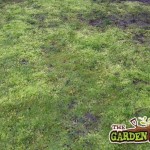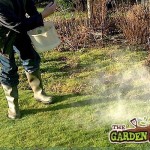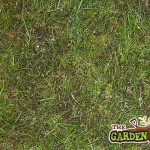Whether you’re a seasoned or a fair weathered gardener there is one thing that we all like to have and that is; a pristine lawn, free of weeds, daisies, dandelions and the dreaded moss. Lawn care is an art in itself and most people will find that a mossy lawn is one area that we have struggled to master. However with products such as Sulphate of Iron De moss for lawns, mossy lawns can be a thing of the past
- Moss on Lawn
- Spreading Sulphate of Iron
- Dead Moss after Sulphate of Iron
Before using Sulphate of Iron on your lawns it is important to know what caused moss to grow on lawns in the first place. There are a number of conditions that need to be considered:
- Soil too wet. Moss thrives in moist conditions & these conditions encourage moss reproduction. The best solution to moss is to improve soil drainage conditions & soil aeration.
- Soil too dry. In shaded & dry areas where grass growth is poor moss can take over.
- Poor grass growth. This can be due to low water, light or fertility and the result can see moss outcompeting with grass
- Cutting grass too short can also encourage moss growth on lawns
- Compacted soil. A common cause of compacted soil is excessive traffic or walking on lawns. It is best to avoid walking on lawns in wet conditions to avoid compaction. Compaction lead to reduced air content in soil and hence poorer grass growth
Application of Sulphate of Iron should be done from late Autumn through to early Spring – best to do it when conditions are mild. Sulphate of Iron can be bought in tubs of about 10Kg which would be a total coverage 350 m2 of moss control on lawns (Note: a tennis court is roughly 260 m2)
The active ingredient in Sulphate of Iron is called ‘Ferrous Sulphate’ this is sometimes mixed with sand and applied to lawns as a topdressing for both moss growth and improved soil aeration
Sulphate of Iron is sometimes also used on flower beds as an ericaceous (acidic fertilizer). Ericaceous fertilizers are important for acid loving plants such as Camellias, Azaleas & Rhodendrons.
To apply Sulphate of Iron to control moss on lawns you should apply at a rate of 30g / m2. This is roughly a small handful per m2. Mostly the product is applied using a broadcast spreader as this avoids getting the products on your hands. When using a broadcast spreader it is important to calibrate the settings first and do a test run before spreading over your lawn. To do a test run lay a sheet of polyethylene or tarpaulin on the ground and measure the flow of Sulphate of Iron from the spreading until to achieve a rate of 30g / m2
Be Careful when handling and always wear gloves. The product will stain paths / paved areas so make sure not to spill it on hardsurfaces and don’t use to kill moss on tarmacadam. If you want to kill moss on tarmac then i would recommend using Armillatox.
Once you have applied the moss killer to the lawn you should water in with a garden hose or if run is forecast then just let nature take its coarse. After about 2 or 3 weeks the moss / lawn will turn an unsightly black. At this point you will need to rake or ‘scarify’ the lawn to remove the dead moss.
With the moss removed from the lawn your grass can now grow into the bare patches where the moss once grew. To maximise grass growth and ensure the grass fills the bare patches (and not weeds or moss) you should either feed your existing lawn with a high Nitrogen based fertiliser or re seed the bare patches with lawn seed
After another 4 or 5 weeks your lawn should have filled out again. It is important to note however that the mossy conditions will return is the soil conditions are not amended. As stated above moss will grow on damp or dry, shaded or compacted soils. So to prevent moss returning to your lawn you should rectify these problems.


